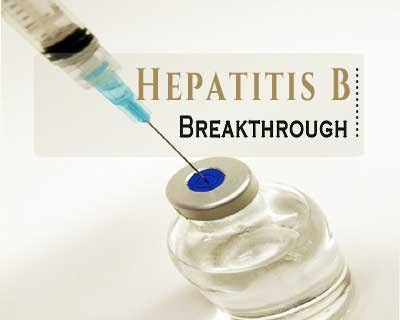- Home
- Editorial
- News
- Practice Guidelines
- Anesthesiology Guidelines
- Cancer Guidelines
- Cardiac Sciences Guidelines
- Critical Care Guidelines
- Dentistry Guidelines
- Dermatology Guidelines
- Diabetes and Endo Guidelines
- Diagnostics Guidelines
- ENT Guidelines
- Featured Practice Guidelines
- Gastroenterology Guidelines
- Geriatrics Guidelines
- Medicine Guidelines
- Nephrology Guidelines
- Neurosciences Guidelines
- Obs and Gynae Guidelines
- Ophthalmology Guidelines
- Orthopaedics Guidelines
- Paediatrics Guidelines
- Psychiatry Guidelines
- Pulmonology Guidelines
- Radiology Guidelines
- Surgery Guidelines
- Urology Guidelines
Study findings could lead to better treatment of hepatitis B

Researchers have gained new insights into the virus that causes hepatitis B according to a study published in the journal eLife. Hepatitis B virus (HBV) is a spherical pararetrovirus that infects hepatocytes. Despite the availability of a vaccine, around 240 million people worldwide suffer from chronic HBV infection placing them at risk for severe liver diseases, such as cirrhosis and cancer.
Various strategies are being explored for the treatment but disruption of the virus capsid represents a promising approach. Scientists believe that the capsid, which drives the delivery of that blueprint to infect a host cell, is a key target in developing drugs to treat hepatitis B.
The researchers used Molecular Dynamics (MD) computer simulations to learn more about the capsid, or protein shell, that encloses the genetic blueprint of the hepatitis B virus.
The study provides functional insight beyond what is accessible to experimental methods and raises important considerations regarding asymmetry in structural studies of icosahedral virus capsids.
Simulation results reveal remarkable asymmetry in capsid shape and essential dynamics, supporting hypotheses that the ability to accommodate asymmetric distortion plays a key role in its biological function. Findings further demonstrate the capsid’s influence on its surrounding solvent environment, particularly with respect to the behavior of charged species, suggesting a mechanism to modulate the display of nuclear localization signals.
A novel treatment strategy for HBV may, thus, lie in the development of small-molecule drugs designed to increase capsid rigidity or otherwise limit the relative degrees of freedom of subunits, such that key dynamical properties are suppressed or any necessary asymmetric distortion becomes impossible.
We think that the capsid might need that ability to distort in order to correctly package its genetic blueprint and get it into the nucleus to generate new copies of the virus during the infection process," said Jodi A. Hadden, the lead author of the research paper.
The researchers also found that small triangular openings, or pores, in the capsid surface are likely the location where its protein "tails" poke through, sending a signal that is essential to the infection process.
The researchers concluded that all the findings have the potential to lead to drug treatments, and if the capsid could be made rigid and unable to distort or if a way could be found to block the triangular pores in its surface, the infection process might be halted.
For more reference log on to https://elifesciences.org/articles/32478

Disclaimer: This site is primarily intended for healthcare professionals. Any content/information on this website does not replace the advice of medical and/or health professionals and should not be construed as medical/diagnostic advice/endorsement or prescription. Use of this site is subject to our terms of use, privacy policy, advertisement policy. © 2020 Minerva Medical Treatment Pvt Ltd